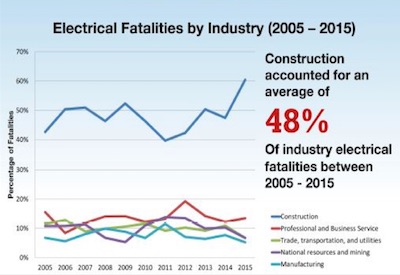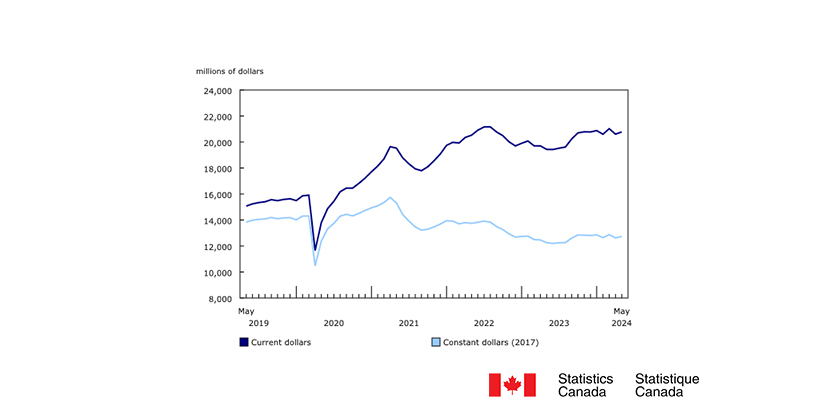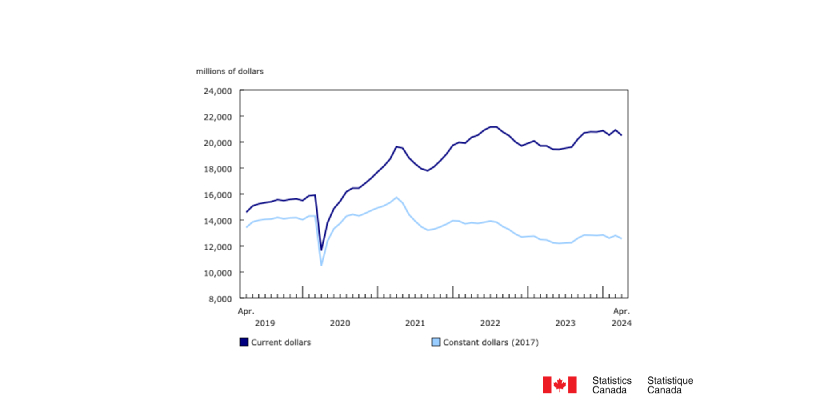Electrical Fatalities Go Down, Nonfatal Injuries Go Up

June 19, 2017
Brett Brenner
The annual incidence of workplace electrical fatalities continues to decline, while nonfatal electrical injuries sharply increased in 2015, states a new report compiled and released by the Electrical Safety Foundation International (ESFI). The “Workplace Electrical Injuries and Fatalities Report” examines data from the U.S. Bureau of Labor Statistics Census of Fatal Occupational Injuries (CFOI) from 2003 to 2015.*
Electrical fatalities occurring in 2015 resumed the long-term trend of annual reduced electrical fatalities after 2014’s increase over 2013. Electrocutions made up the vast majority of electrical fatalities. In 2015, 60% of all fatal electrical injuries occurred in the construction industry.
Construction remained the leading source of fatal electrical injuries, more than four times the contribution of the second-highest source, professional and business services. From 2011 to 2015, workers in the 25-to-34 age group experienced electrical fatalities at one and a half to two times the average for all age groups.
Meanwhile, the incidence of nonfatal electrical injuries did not see the same downward trend.
Nonfatal electrical injuries resulting in days away from work rose by one third in 2015 over 2014, the highest level since 2009. The median number of days away from work for nonfatal electrical injuries was five.
Although more electrical burn injuries than electric shock injuries occurred in the construction industry from 2003 to 2015, that gap is beginning to narrow. Construction saw more electric shock injuries than electrical burn injuries in 2010, 2013, and 2015. In fact, three times more electric shock injuries than electrical burn injuries occurred in 2015.
The utility industry continues to see more electrical burn injuries than electric shock injuries each year, except for 2015 when their numbers were approximately equal.
While the downward trend of electrical fatalities shows heightened awareness of electrical safety practices, even one preventable electrical fatality is too many. These fatalities, along with the recent increase of nonfatal electrical injuries, emphasize the importance of adherence to electrical safety requirements and best practices.
Make sure safety is the top priority in your workplace and that your employees have the proper training and resources to maintain a zero-tolerance policy regarding electrical injuries and fatalities.
Brett Brenner is President of the Electrical Safety Foundation International (ESFI). Based in Rosslyn, VA, EFSI is dedicated exclusively to promoting electrical safety at home and in the workplace. This article was previously published by NEMA, http://blog.nema.org/2017/05/12/electrical-fatalities-go-down-nonfatal-injuries-go-up/.
* Electrical Industry News Week prefers to quote Canadian statistics wherever possible, but since health and safety in Canada is a provincial responsibility, there is no equivalent database that is publicly accessible to draw from. This article has been lightly edited.






![Guide to the Canadian Electrical Code, Part 1[i], 26th Edition – A Road Map: Section 14 – Protection and Control](https://electricalindustry.ca/wp-content/uploads/2022/11/Guide-CE-Code-2-768x432.png)










